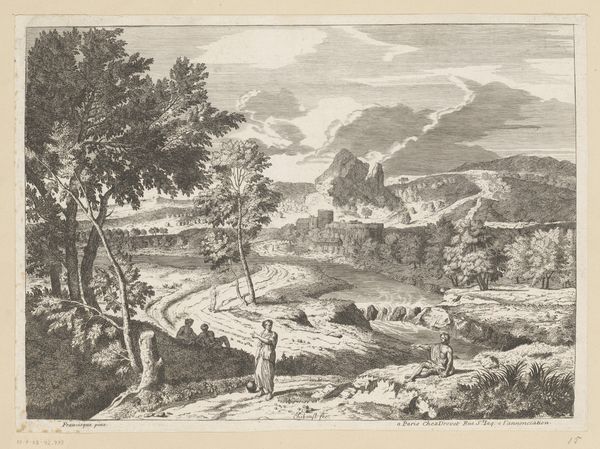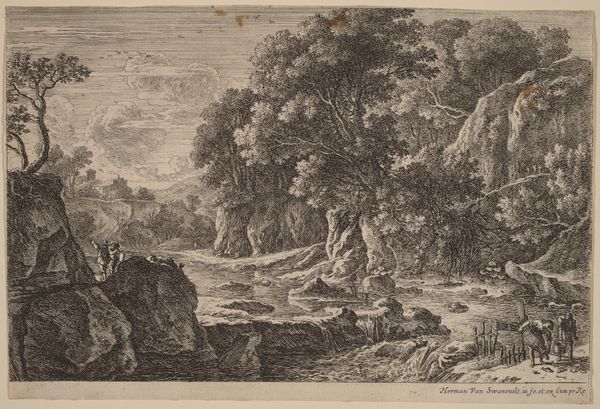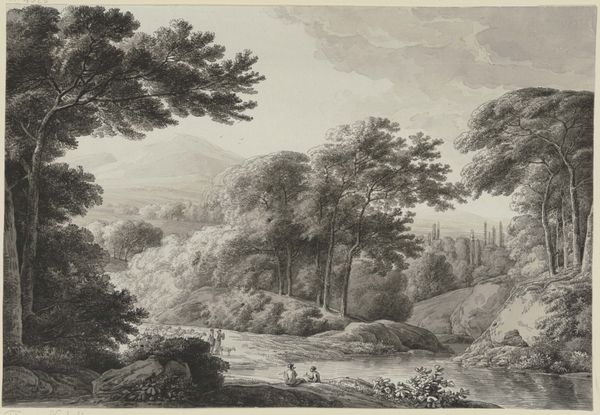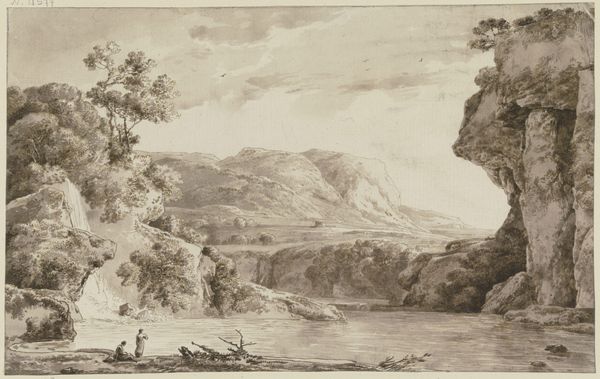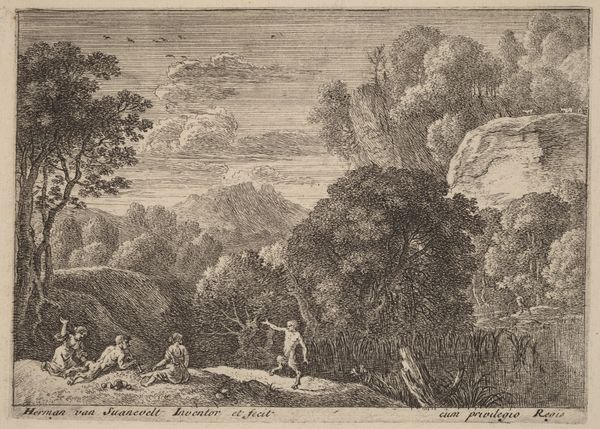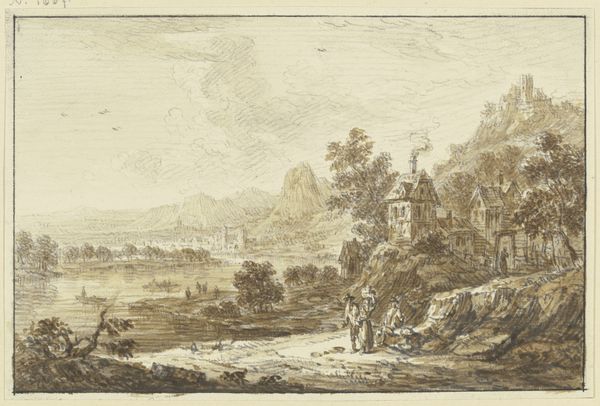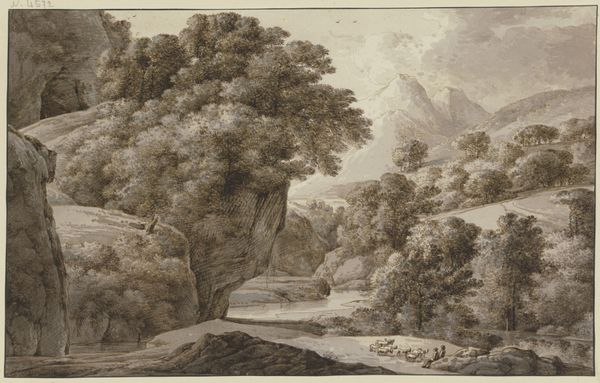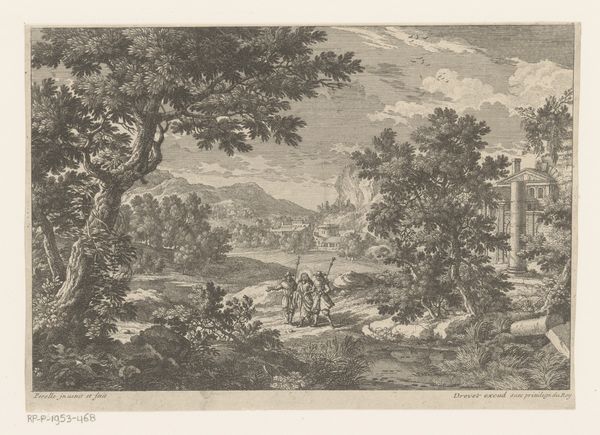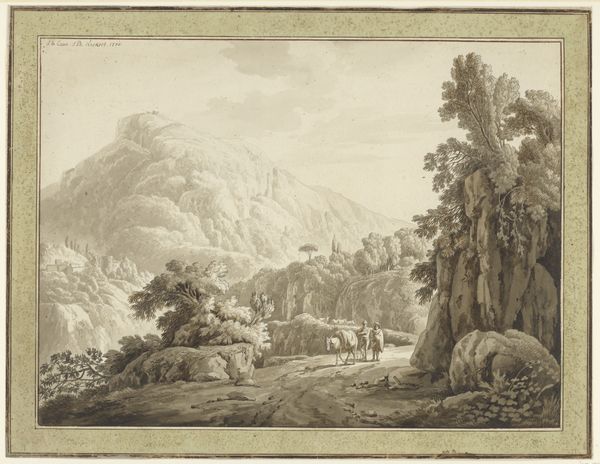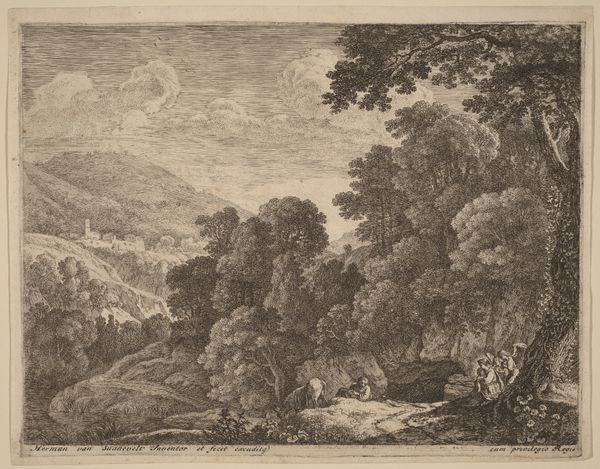
Mountainous landscape with herdsmen and cows 1720 - 1780
0:00
0:00
drawing, print, etching
#
pencil drawn
#
drawing
# print
#
etching
#
landscape
#
history-painting
#
realism
Dimensions: Plate: 9 3/4 × 12 3/16 in. (24.7 × 30.9 cm) Sheet: 10 11/16 × 13 1/8 in. (27.2 × 33.3 cm)
Copyright: Public Domain
Editor: So, this is "Mountainous Landscape with Herdsmen and Cows," an etching by Joseph Wagner, dating from somewhere between 1720 and 1780. The scene is so serene. It makes me wonder what it was like to live in that time period and be one with nature. What captures your attention about this particular work? Curator: What strikes me immediately is the process involved in creating such a detailed image through etching. Consider the labor - the time spent meticulously rendering each line to create this illusion of depth and light. Look at the range of values achieved solely through the density and direction of etched lines. It really challenges our notions about 'high art' and printmaking as a craft. Editor: I never thought about the labor behind it! How would this image have been produced back then, and who was the intended audience? Curator: Exactly! We need to think about the means of production. Etchings like this would have been relatively accessible. They were a form of reproduction, allowing for wider distribution of imagery. This means it would have reached not only wealthy patrons but potentially a burgeoning middle class. It provides a glimpse into the aesthetic desires and consumption patterns of the period. How does that make you feel about this image now? Editor: It makes me realize that this landscape isn't just a pretty picture; it is also about production, dissemination, and consumption during that era. Almost like landscape-as-commodity in a way! Curator: Precisely! The very materiality of the print, the ink on paper, connects us to the workshops and the markets of 18th-century Europe. This artwork really demonstrates the ways in which artistic practice, labor, and material conditions intersect and create a new understanding. Editor: That definitely shifts my perspective. I came in thinking about the picturesque scenery, and now I'm thinking about social and economic context! Curator: It all contributes to the value and historical impact of artmaking and our modern interpretation of it.
Comments
No comments
Be the first to comment and join the conversation on the ultimate creative platform.
